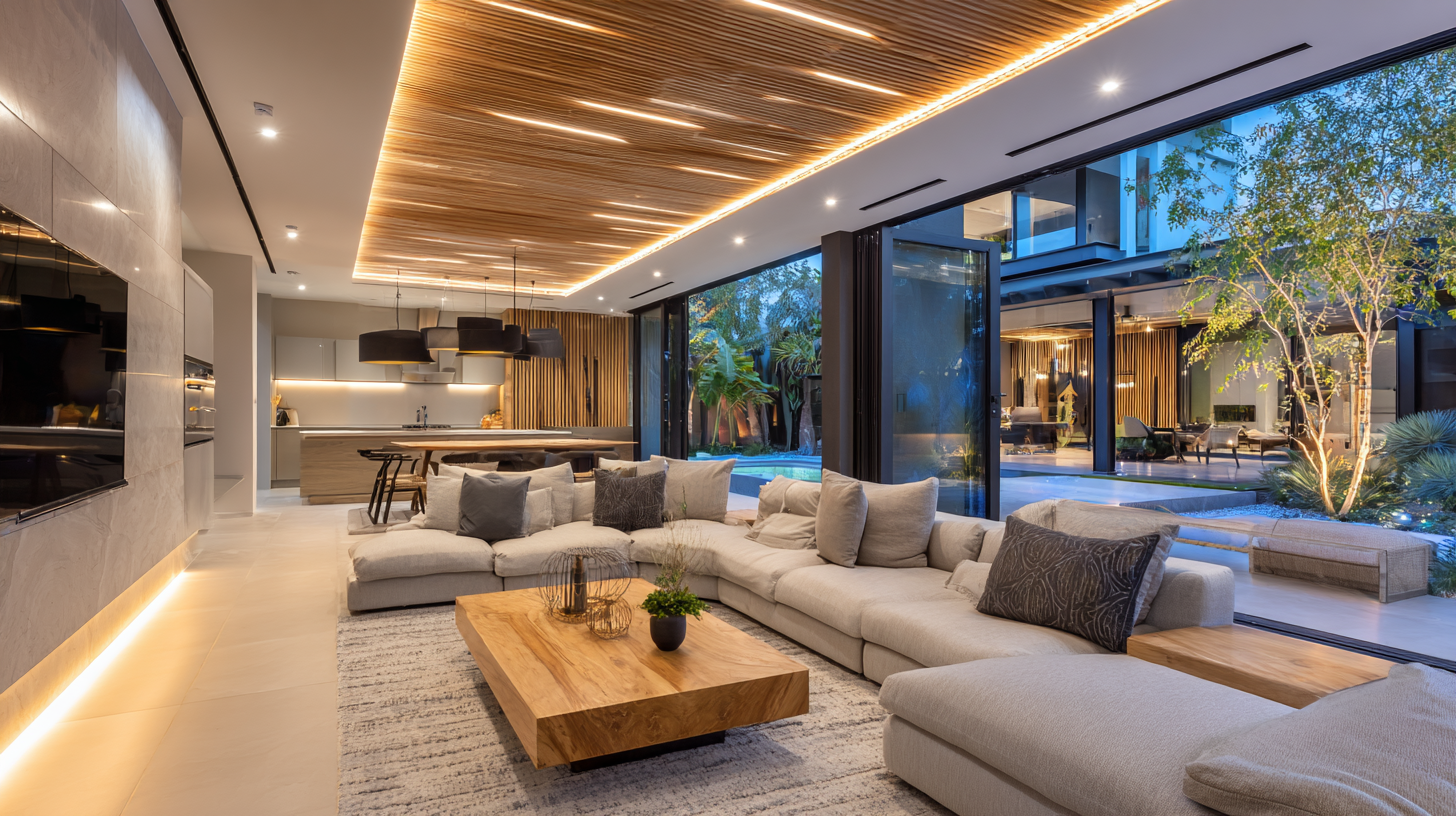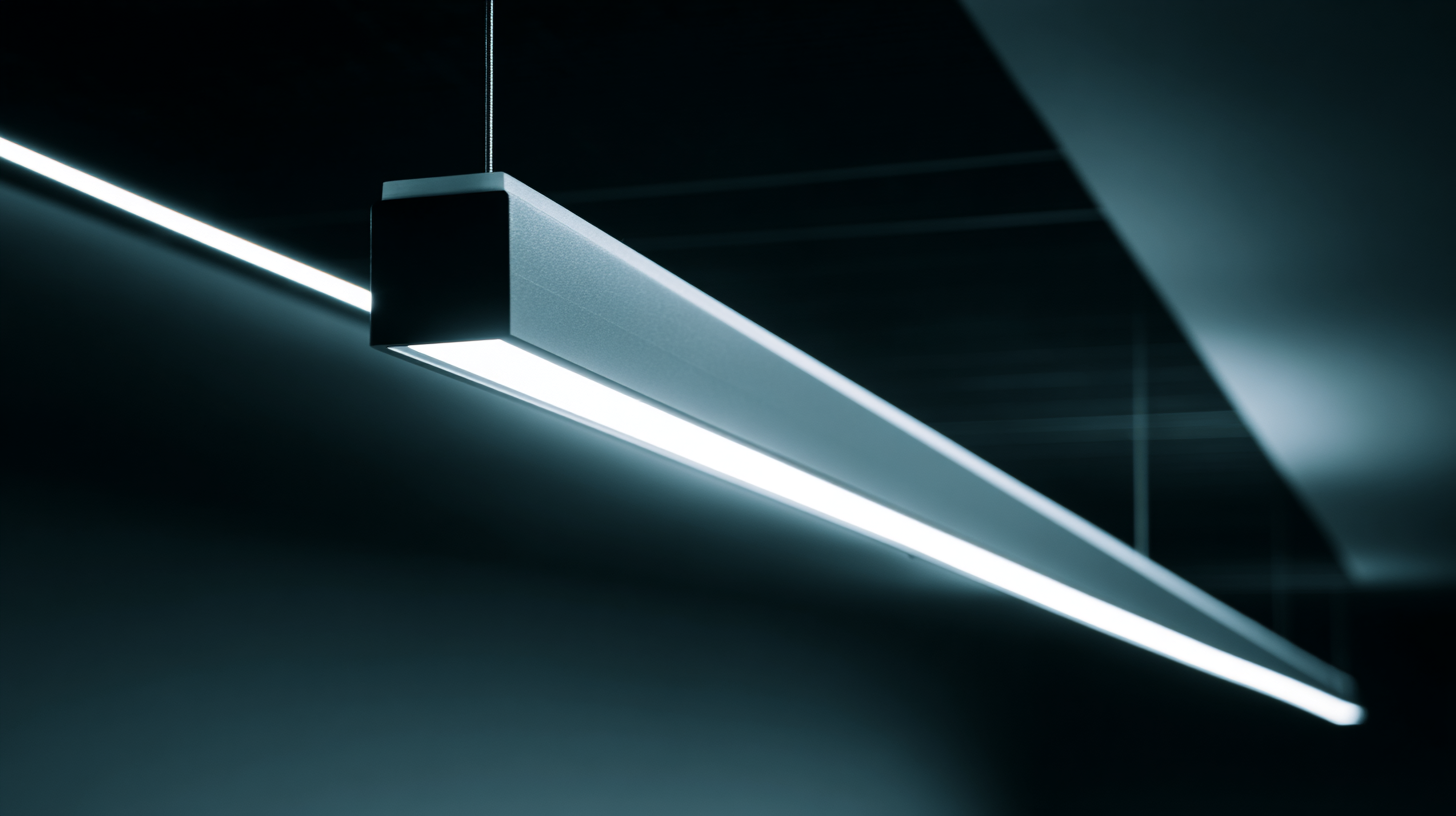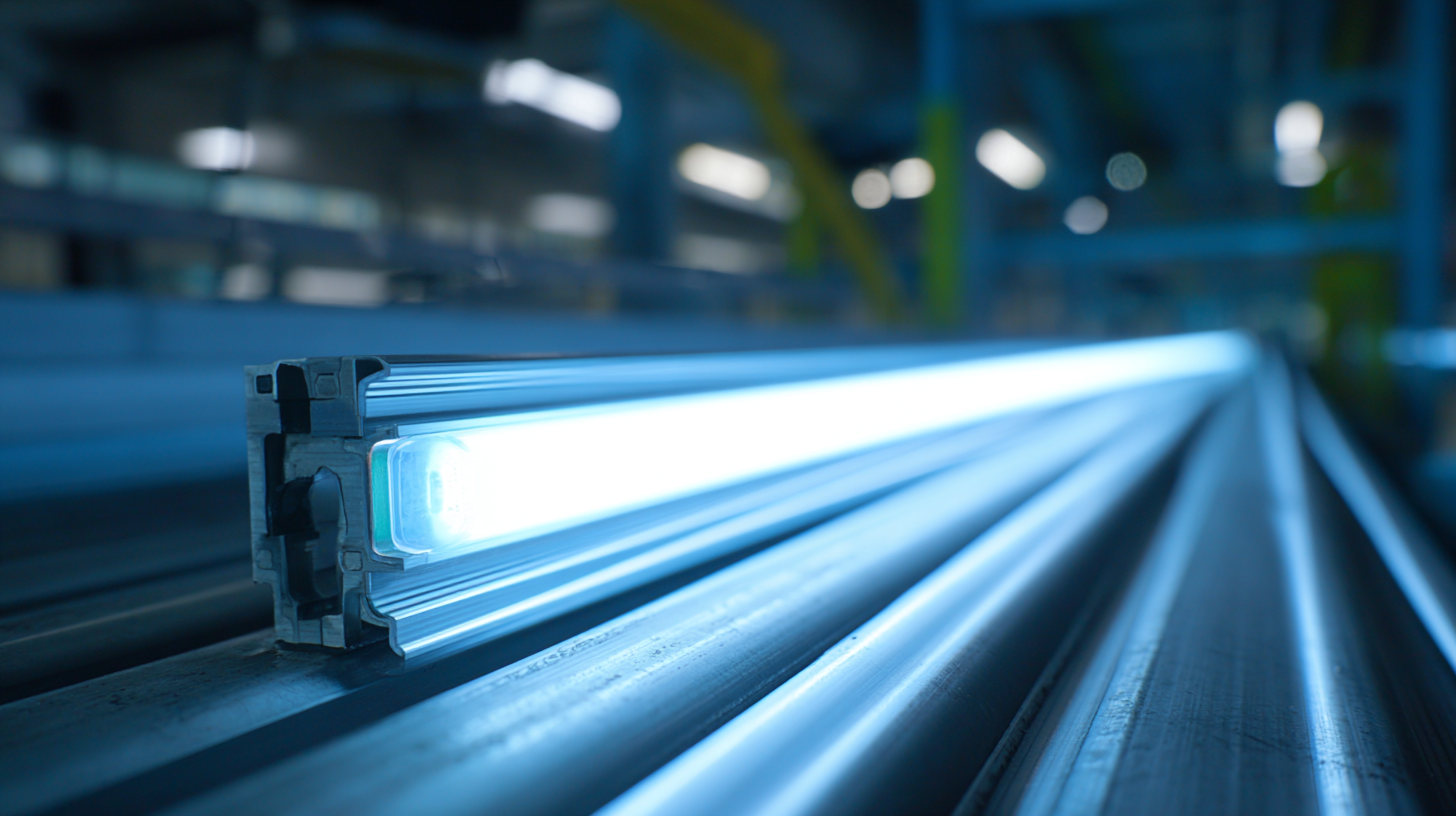How to Choose the Best LED Linear Light: Key Technical Specifications Explained
In the evolving landscape of lighting technology, selecting the best LED linear light is crucial for both aesthetic appeal and energy efficiency. As we look towards the market trends and analyses projected for 2025, understanding the key technical specifications of LED linear lights becomes increasingly important. These products not only provide versatile lighting solutions for various applications but also adhere to strict energy standards that contribute to sustainability efforts. This blog aims to demystify the essential features of LED linear lights, enabling consumers to make informed decisions while also highlighting the broader implications of these choices on the lighting industry and the environment. Join us as we delve into the critical factors that will guide you in your pursuit of the perfect LED linear light for your needs.

Understanding LED Linear Light: Key Components Compared
When selecting the best LED linear light for your space, understanding its key components is crucial for making an informed decision. LED linear lights consist of several main parts: the LED chip, the driver, the housing, and the lens. Each component plays a vital role in performance, efficiency, and durability. The LED chip determines the brightness and color temperature, while the driver regulates power supply and ensures stability during operation. The housing protects these elements from environmental damage, and the lens affects the light distribution.
Tips: When choosing an LED linear light, pay attention to the wattage of the LED chip, as it often correlates with energy consumption and brightness levels. Look for lights with high-quality drivers that minimize flicker and enhance longevity. Also, consider the housing material; aluminum and polycarbonate are popular choices for durability and heat dissipation.
Lastly, examine the light distribution options provided by different lens designs to ensure optimal lighting for your specific application. Whether you need direct or diffused light, selecting the appropriate lens will enhance the functionality of your setup.
How to Choose the Best LED Linear Light: Key Technical Specifications Explained
| Specification | Standard Value | Description |
|---|---|---|
| Wattage | 10W - 60W | Indicates power consumption, affecting brightness. |
| Lumens Output | 800 - 6000 lm | Measures light emitted; higher is brighter. |
| Color Temperature | 3000K - 6500K | Indicates warmth or coolness of light. |
| CRi (Color Rendering Index) | >80 | Measures how accurately colors are rendered. |
| Lifespan | 25,000 - 50,000 hours | Expected duration before significant failure. |
| Ingress Protection Rating | IP20 - IP67 | Protects against dust and water; higher is better. |
| Beam Angle | 120° | Width of light distribution; wider angles cover more area. |
Lumens vs. Watts: Evaluating Brightness and Energy Efficiency
When selecting the best LED linear light, understanding the difference between lumens and watts is crucial. Lumens measure the actual brightness produced by the light, while watts indicate the energy consumption. Higher lumens mean a brighter light, and lower watts suggest better energy efficiency. For optimal selection, focus on the lumen output that suits your space needs and consider the wattage to gauge the running costs.
Tips: Always look for LED lights with a high lumen-to-watt ratio; this ensures you’re getting more brightness for less energy. Another tip is to check for the Energy Star label, as it signifies adherence to energy efficiency standards. Evaluating the application of the light—whether for ambient, task, or accent purposes—can also influence your choice.
In addition to lumens and watts, pay attention to the color temperature measured in Kelvins (K). This will help you achieve the desired ambiance, whether you prefer a warm, cozy tone or a cool, vibrant light. Matching the color temperature to the purpose of the room enhances functionality and mood.

Color Temperature and CRI: Impact on Ambiance and Color Accuracy
When selecting LED linear lights, understanding color temperature and Color Rendering Index (CRI) is crucial for achieving the desired ambiance and ensuring color accuracy. Color temperature, measured in Kelvin (K), impacts the emotional tone of a space. Typically, warmer tones (2700K-3000K) create inviting environments suitable for residential areas, while cooler tones (5000K-6500K) are ideal for workspaces, enhancing concentration and alertness. A study by the Lighting Research Center indicates that environments with appropriate color temperatures can boost productivity by up to 20%.
CRI, on the other hand, measures a light source's ability to accurately reproduce colors in comparison to natural light. Ranging from 0 to 100, higher CRI values are essential in settings where color accuracy is paramount, such as in art studios or retail spaces. According to the LED Lighting Facts program, a CRI of 90 or above is recommended for these applications, as it significantly improves color discrimination and visual appeal. For instance, a retailer's choice of lighting with a CRI of 95 can enhance product presentation, potentially increasing customer engagement and sales.
Decoding IP Ratings: Assessing Durability for Various Environments
When selecting the best LED linear lights, understanding the significance of IP ratings is paramount, especially in the context of increasingly extreme environmental conditions driven by climate change. IP ratings, or Ingress Protection ratings, are crucial in determining how well a lighting fixture can withstand exposure to dust and water. For instance, an IP65 rating indicates complete protection against dust and low-pressure water jets, making it ideal for outdoor settings that may experience heavy rain or harsh conditions. This is particularly relevant as studies predict that the frequency of extreme weather events, such as heatwaves and heavy storms, will escalate due to global warming trends.
Furthermore, the durability of LED fixtures in various environments cannot be overstated. A well-selected LED light not only enhances energy efficiency with a lifespan of up to 50,000 hours but also ensures performance stability, reducing maintenance costs over time. In industrial or commercial settings, where harsh conditions prevail, it is essential to choose lights that can endure specific environmental challenges. Reports highlight that as many as 30% of lighting failures in extreme conditions can be attributed to inadequate ingress protection, which reinforces the necessity to focus on both technical specifications and environmental compatibility when making a selection.
LED Linear Light Durability Assessment by IP Ratings
Comparative Costs: Balancing Quality and Budget for LED Linear Lights
When selecting LED linear lights, balancing quality and budget is essential. While some may be tempted to choose the cheapest option available, investing a little more upfront can lead to significant long-term benefits. Higher-quality LED linear lights often produce better light quality, have longer lifespans, and come with more comprehensive warranties, ensuring that your investment pays off over time.
Tips for selecting the right product include comparing lumens per watt to assess efficiency and light output. Look for products with a high color rendering index (CRI) for vibrant colors and better illumination. Additionally, consider the construction quality, as durable materials can withstand environmental conditions and reduce replacement costs.
Another important factor is to evaluate the total cost of ownership, which includes both initial purchase price and potential maintenance costs. Sometimes, a higher initial cost may offer better energy efficiency and lower operational expenses, making it a smarter choice. Don’t forget to check for any available rebates or incentives for energy-efficient lighting, as these can help offset the higher upfront costs.

